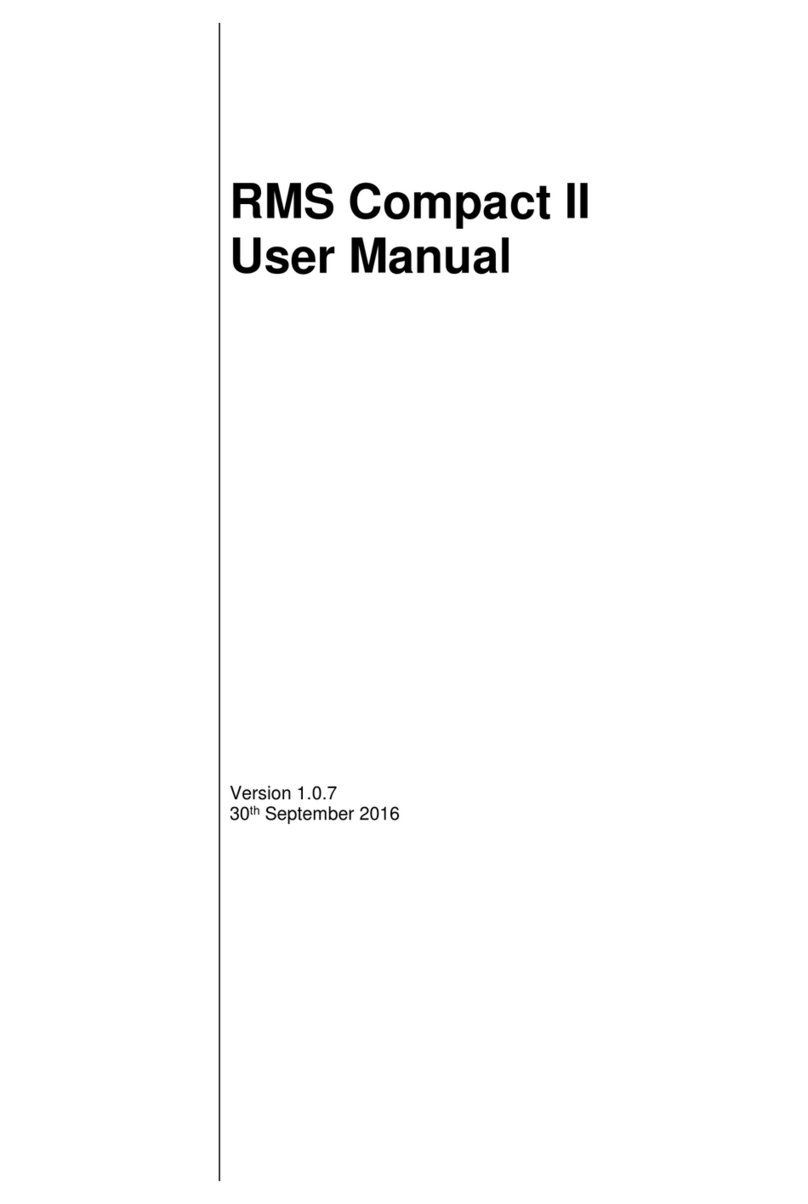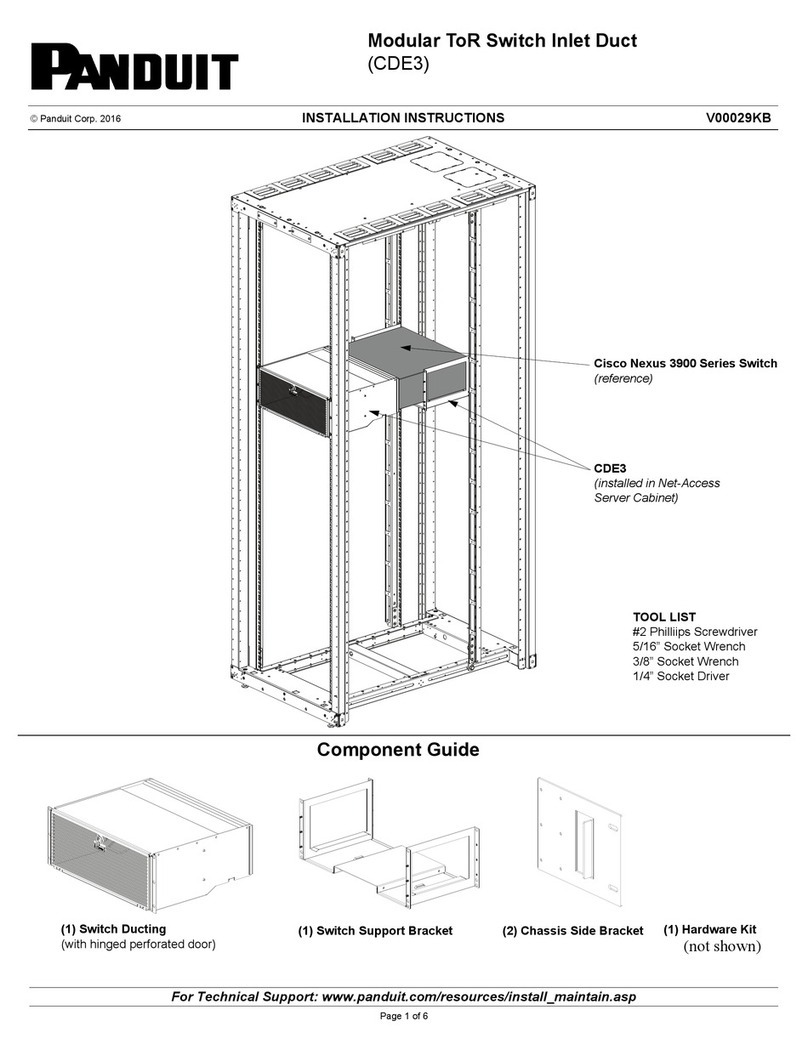
June 2022 3 VeriSafe 2.0 AVT
INFORMATIONS RELATIVES À LA SÉCURITÉ
Le présent manuel contient des renseignements et des avertissements qui doivent être suivis pour assurer un fonctionnement en toute
sécurité du VAT. Si le VAT n’est pas utilisé comme décrit dans le présent manuel, ses fonctions de sécurité pourraient être altérées.
Le non-respect des renseignements et des avertissements contenus dans le présent manuel pourrait entraîner une défaillance
du produit, des décharges électriques, des blessures graves ou même la mort.
Conditions
particulières
d’utilisation
Endroits dangereux
L’équipement doit être installé dans une enveloppe offrant au moins la protection IP54,
conformément à la norme IEC 60079-0.
L’enveloppe doit être accessible uniquement à l’aide d’un outil.
AVERTISSEMENTS
Toujours éteindre l’alimentation électrique avant d’accéder à une enveloppe électrique.
Toujours suivre les procédures de sécurité, de verrouillage et d’étiquetage pour exécuter des travaux sur des systèmes et des
équipements électriques ou à proximité de tels dispositifs.
L’utilisation du VAT ne remplace pas les procédures de verrouillage et d’étiquetage. Le VAT est conçu pour être utilisé conjointement
avec les processus de verrouillage et d’étiquetage; il remplace uniquement l’étape de vérification d’absence de tension.
Utiliser un équipement de protection individuelle approprié lors de travaux à proximité de sources d’énergie électrique dangereuses.
Ne pas utiliser ce produit en dehors des limites de performance et des limites environnementales spécifiées.
Ce produit doit être installé et mis en service par un électricien qualifié connaissant les codes électriques locaux et nationaux.
Le VAT ne vérifiera l’absence de tension qu’au point du circuit où il est installé. S’il existe d’autres sources d’alimentation dans
l’équipement, une tension dangereuse peut être présente.
L’absence des indicateurs rouges de présence de tension ne permet pas à elle seule de vérifier l’absence de tension. Pour ce faire,
il faut amorcer la vérification d’absence de tension et seul l’indicateur vert doit s’allumer.
Le VAT doit être correctement installé et mis à la terre comme décrit dans le présent manuel pour fournir une indication appropriée de
l’absence de tension. Pour que l’appareil vérifie la connexion au circuit, les fils de détection ne doivent pas être connectés mécaniquement entre
eux. Le bon fonctionnement de l’appareil doit être vérifié après son installation (voir la Liste de vérification de mise en service à la page 14).
L’excédent des fils de détection doit être coupé et ceux-ci ne doivent pas être prolongés à l’aide d’une épissure. Lors de l’utilisation de
borniers ou de blocs de distribution d’énergie, la longueur totale des fils de détection entre le module d’isolement et les conducteurs
de la source ne doit pas dépasser 3,0 m (10 pi).
Les fils de détection ayant la même désignation sur l’étiquette doivent être raccordés au même conducteur (L1, L2, L3 ou TERRE).
Chaque conducteur doit compter au moins un ensemble de fils de détection, comme indiqué sur les schémas.
Toujours respecter les normes et les codes d’installation locaux.
Le module d’indication alimenté par pile contient une pile au lithium qui présente un risque d’incendie, d’explosion et de brûlures
graves. Ne pas écraser, recharger, démonter, incinérer ou chauffer la pile à plus de 85 °C (185 °F), ni exposer son contenu à l’eau.
Le VAT ne fonctionne pas avec une pile alcaline AA standard de 1,5 V. Utiliser uniquement des piles approuvées par Panduit.
Utiliser uniquement les composants du système VAT 2.0 (câble système, module d’isolement, module d’indication). Ne pas utiliser
un câble Ethernet standard. Ne pas utiliser les composants du système VAT 1.0 avec ceux du système VAT 2.0.
La pile, le câble système, les joints toriques et les joints d’étanchéité peuvent être remplacés. Aucune autre pièce du produit ne peut
être remplacée. Ne pas essayer d’ouvrir le module d’indication ou le module d’isolement à des fins de réparation ou de modification.
Lors de l’entretien de ce produit, utiliser uniquement les pièces de rechange spécifiées.
La partie du module d’indication qui se trouve à l’extérieur de l’enveloppe électrique peut être lavée lorsque le module est installé
dans une enveloppe appropriée. Avant de laver cette partie, s’assurer que les joints toriques sont en bon état, que la plaque frontale
est intacte et bien fixée à l’appareil et que le capuchon est bien installé.
Le câble système du VAT doit être situé à une distance d’au moins 6 mm (0,25 po) des fils de détection et d’autres circuits dans
l’enveloppe électrique.
Dans des installations à vibrations élevées, fixer le module d’isolement à une surface à l’aide de vis pour éviter d’endommager
le VAT et attacher les fils de détection et le câble système pour éviter toute contrainte aux points de connexion.
Le VAT VeriSafe est conçu pour être utilisé dans des systèmes électriques de 50 ou 60 Hz.
S’assurer que tous les fils de détection sont correctement raccordés et fixés au conducteur d’alimentation ou à toute autre partie rigide
à proximité afin d’empêcher leur mouvement si le raccordement venait à être endommagé.
Le VAT VeriSafe 2.0 est conçu pour être utilisé dans les systèmes électriques c.c. et les systèmes électriques c.a. de 50 ou 60 Hz.
Le VAT ne doit pas être installé sur les sections d’un circuit où le VAT est exposé à une énergie à haute fréquence comme dans le cas
de variateurs de fréquence (VFD) ou d’autres éléments de circuit générant une énergie à haute fréquence (formes d’onde présentant
une forte interférence électromagnétique [EMI]). Pour obtenir plus d’informations sur le bon positionnement du VAT VeriSafe 2.0 dans
les applications de VFD, consulter la note technique accessible en ligne sur panduit.com.
Si un problème survient pendant l’installation, l’utilisation ou l’entretien du VAT VeriSafe 2.0, contacter le soutien technique de Panduit.
Communiquer également avec Panduit en cas de problème avec la sécurité fonctionnelle du produit. Le numéro de modèle et le numéro de série
du produit sont imprimés sur les étiquettes des modules d’isolement et d’indication.
Les modules d’isolement et d’indication du VAT VeriSafe 2.0 contiennent tous deux des cartes de circuits électroniques. Le module d’indication
contient également une pile au lithium qu’il faut retirer à la mise hors service. Ne pas jeter la pile dans la poubelle; l’apporter plutôt à une installation de
recyclage de piles appropriée. Les modules d’isolement et d’indication peuvent être apportés à une installation de recyclage d’appareils électroniques.






























